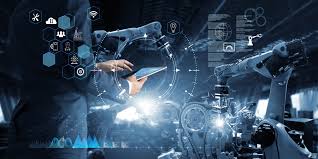Digital Twins a catalyst to fulfilling sustainability agenda
Organisations implement digital twins to understand and predict their energy consumption and emissions.
According to the ‘Digital Twins: Adding Intelligence to the Real World’ report from the Capgemini Research Institute, 60 per cent of organisations across major sectors are leaning on digital twins1 as a catalyst to not only improve operational performance, but also to fulfil their sustainability agenda.
By being able to simulate the physical world, digital twins can help organisations to better utilise resources, reduce carbon emissions, optimise supply and transportation networks, as well as increase employee safety.
The report reveals that digital twin implementations are set to increase by 36 per cent on average over the next five years. This indicates a growing appetite for digital twin technology across all major industries, such as automotive, aerospace, life sciences, and energy and utilities among others, driven by organisations looking to advance their digital transformation journeys and adding intelligence to operations along the value chain.
Organisations surveyed reported that cost-saving benefits (79 per cent) and technological advancement (77 per cent) are key drivers of their digital twin investments.
The research also found that 57 per cent of organisations agree that digital twin technology is pivotal to improving sustainability efforts, which reflects the growing trend of businesses keen to deliver on their Environmental Social Governance (ESG) promises.
Digital twins offer flexible ways of working to mitigate risks and extend collaboration, thereby providing a unique opportunity to increase profitability while optimising the use of resources along the value chain.
Over one third (34 per cent) of organisations surveyed reported having already implemented digital twins at scale to understand and predict their energy consumption and emissions.
Consumer products and energy and utilities industries are leading the way in this use case, with 52 per cent and 50 per cent respectively utilising the virtual replicas to benefit the sustainability of operations.
Collectively, those that have already begun implementing digital twin technology are realising an average improvement of 16 per cent in sustainability metrics.
Roshan Gya, global head of intelligent industry, Capgemini said, “By bridging the ‘physical-digital’ gap, digital twins help organisations to unlock value, bring synergies across data, technologies, and business processes, and are at the core of Intelligent Industry2 transformation.
“Digital Twins offer a unique opportunity for organisations looking to accelerate their journey towards intelligent operations, while increasing profitability and enabling a sustainable future.”
Footnotes
1 A digital twin is a virtual replica of a physical system that can model, simulate, monitor, analyse, and constantly optimise the physical world. It aims to bridge the “physical-digital” gap at the right frequency and fidelity, thereby improving performance and sustainability.
Used in a multitude of cases across the value chain – from design and conception through to manufacturing and production – the technology provides a remote, collaborative, and flexible way of working. It can function as a tool to experiment with different scenarios and assess the impact of each decision without any real-world risks, leading to faster time to market, lower costs and improved safety.
2 Capgemini coined the term “‘Intelligent Industry”’ to describe the next era of transformation. Intelligent Industry is about fostering synergies between the digital and engineering worlds to help companies build intelligent products, operations, and services, at scale.
Intelligent Industry brings together engineering, IT, and digital and thereby allows a convergence of the physical and virtual worlds.


